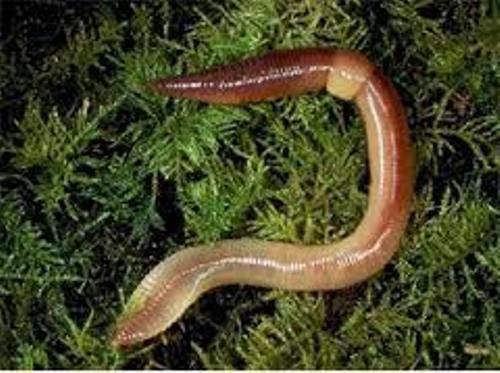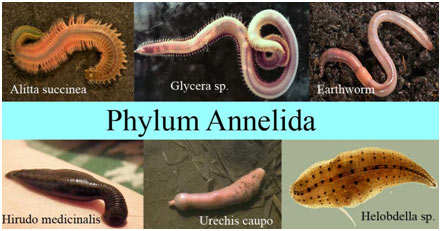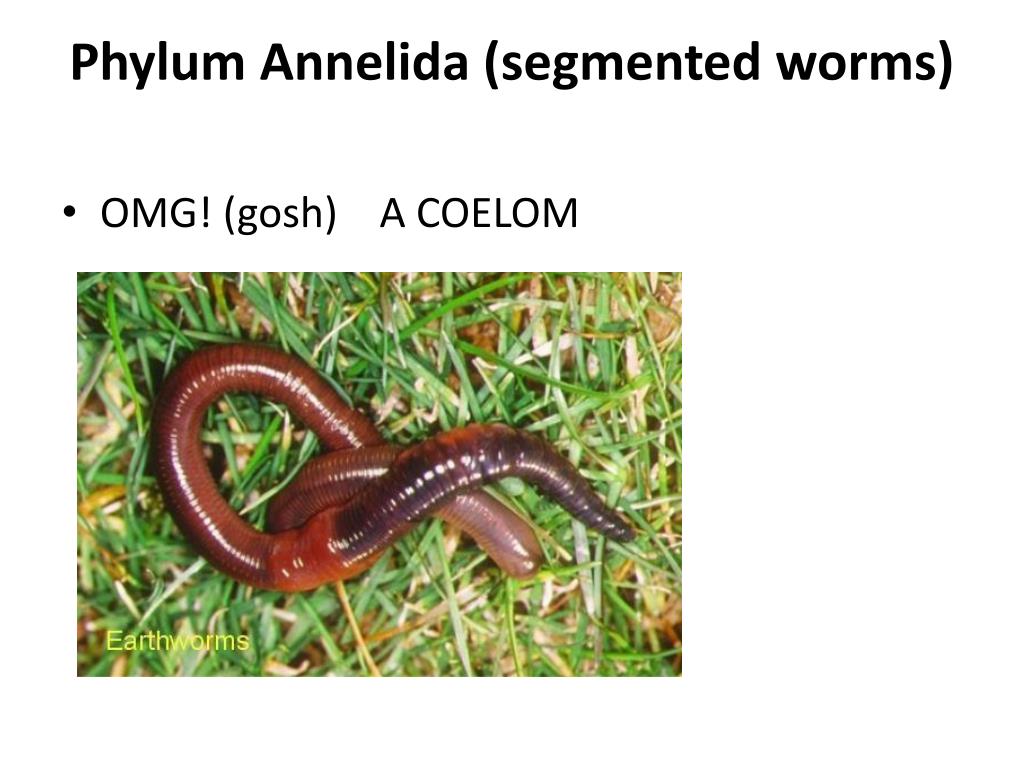The circulatory fluid found in annelids and all vertebrates is called.
If you’re searching for the circulatory fluid found in annelids and all vertebrates is called images information connected with to the the circulatory fluid found in annelids and all vertebrates is called keyword, you have visit the ideal site. Our website frequently gives you hints for downloading the maximum quality video and image content, please kindly search and find more enlightening video content and images that fit your interests.
 Annelid Everything You Need To Know With Photos Videos From alchetron.com
Annelid Everything You Need To Know With Photos Videos From alchetron.com
The blood and interstitial fluid cannot be distinguished. Most vertebrates and some invertebrates like this annelid earthworm have a closed circulatory system. In this type of circulatory system the animals like annelids a few other groups of invertebrates and vertebrates have a completely closed system of vascular channels. Everyone said to start this question we will talk about open and closed circulatory systems.
So open circulatory systems.
In arthropods the open circulatory system is a system in which a fluid in a cavity called the hemocoel bathes the organs directly with oxygen and nutrients with there being no distinction between blood and interstitial fluid. Hemolymph returns to the blood vessel through openings called ostia. Among all the vertebrate bodys tissues blood is the only liquid tissue a fluid highway transporting gases nutrients hormones antibodies and wastes throughout the body. In this type of system blood is pumped by a heart through vessels and does not normally fill body cavities. This combined fluid is called hemolymph or haemolymph.
 Source: researchgate.net
Source: researchgate.net
Both b and c. Blood and interstitial fluid are distinct. In b open circulatory systems a fluid called hemolymph is pumped through a blood vessel that empties into the body cavity. Present in molluscs and arthropods. In the closed circulatory system the blood pumped by the heart is always circulated through a closed network of blood vessels.
The circulatory system has two functional components viz.
Present in molluscs and arthropods. The blood circulates within closed vessels. Open Circulatory System. In this type of system blood is pumped by a heart through vessels and does not normally fill body cavities.
 Source: guyhowto.com
Source: guyhowto.com
So open circulatory systems. Fluid or blood filters through the wall of the capillaries into the tissue. These fossils predate the most recent common ancestor of all living annelids and so demonstrate features that are primitive for annelids. Everyone said to start this question we will talk about open and closed circulatory systems.
 Source: researchgate.net
Source: researchgate.net
Example of open circulation Closed circulatory system Found in earthworms annelids squidsoctopus cephalopods vertebrates Fluid called blood stays in the vessels Smaller branching vessels supply tissues Example of closed circulatory system. I usually just have a cavity with a bunch of fluid. Hemolymph returns to the blood vessel through openings called ostia. These fossils predate the most recent common ancestor of all living annelids and so demonstrate features that are primitive for annelids.
 Source: alchetron.com
Source: alchetron.com
The phyla Mollusca and Annelida belong to a clade called the Lophotrochozoa which also includes the phylum Nemertea or ribbon worms link. The material that makes blood a liquid is a protein-rich fluid called plasma that makes up approximately 55 of blood. The circulatory system can then carry the oxygenated blood to the other parts of the body. The closed circulatory system is a system wherein the blood stays in the network of veins arteries and capillaries.
Fluid or blood filters through the wall of the capillaries into the tissue. The material that makes blood a liquid is a protein-rich fluid called plasma that makes up approximately 55 of blood. Closed Circulatory System. Closed circulatory systems evolved in echinoderms and vertebrates have the blood closed at all times within vessels of different size and wall thickness.
A network of minute capillaries unite the small arteries with the veins.
A network of minute capillaries unite the small arteries with the veins. The other 45 is made up mostly of red and white blood cells. A few invertebrates like arthropods contain an open circulatory. Closed circulatory systems evolved in echinoderms and vertebrates have the blood closed at all times within vessels of different size and wall thickness. Blood and interstitial fluid are distinct.
 Source: slidetodoc.com
Source: slidetodoc.com
-Closed- found in annelids cephalopods and all vertebrates circulatory fluid called blood is confined to vessels and is distinct from interstitial fluid -3 components. Circulatory system found in annelids including earthworms many molluscs and all vertebrates Closed circulatory system Circulatory system in which one or more hearts pump blood into large vessels that branch into smaller ones that infiltrate the tissues and organs. The closed circulatory system can be found in almost all vertebrates and in invertebrate categories like annelids and cephalopods. In arthropods the open circulatory system is a system in which a fluid in a cavity called the hemocoel bathes the organs directly with oxygen and nutrients with there being no distinction between blood and interstitial fluid. Hemolymph returns to the blood vessel through openings called ostia.
In animals that contain coelomic fluid instead of blood oxygen diffuses across the gill surfaces into the coelomic fluid. Hemolymph -The heart pumps hemolmph into cavities called sinuses where the organs are. Closed Circulatory System. The material that makes blood a liquid is a protein-rich fluid called plasma that makes up approximately 55 of blood.
A network of minute capillaries unite the small arteries with the veins.
Most vertebrates and some invertebrates like this annelid earthworm have a closed circulatory system. In animals that contain coelomic fluid instead of blood oxygen diffuses across the gill surfaces into the coelomic fluid. This system is more advantageous as the fluid is regulated in better ways. Slightly younger but equally important early annelid fossils are found in the Burgess Shale of British Columbia Canada dating from the middle Cambrian 505 million years old.
 Source: slideplayer.com
Source: slideplayer.com
Body size and shape that keeps all cells in constant contact with environment - Each cell can exchange materials directly ex. The difference is that protonephridia combine both filtration stages in the same organ while metanephridia perform only the second filtration and rely on other mechanisms for the first in annelids special filter cells in the walls of the blood vessels let fluids and other small molecules pass into the coelomic fluid where it circulates to the metanephridia. The closed circulatory system can be found in almost all vertebrates and in invertebrate categories like annelids and cephalopods. The blood circulates within closed vessels.
 Source: alchetron.com
Source: alchetron.com
A four-chambered heart d. The closed circulatory system is a system wherein the blood stays in the network of veins arteries and capillaries. The other 45 is made up mostly of red and white blood cells. The phyla Mollusca and Annelida belong to a clade called the Lophotrochozoa which also includes the phylum Nemertea or ribbon worms link.
 Source: slidetodoc.com
Source: slidetodoc.com
The circulatory system has two functional components viz. Open Circulatory System. Present in molluscs and arthropods. Hemolymph returns to the blood vessel through openings called ostia.
Body size and shape that keeps all cells in constant contact with environment - Each cell can exchange materials directly ex.
And thats how um auditions transported in this fluid is called ahi moke them and that is the main difference because then closed circulatory systems. The hemolymph directly bathes the organs and tissues. This system is also called a vascular system. Slightly younger but equally important early annelid fossils are found in the Burgess Shale of British Columbia Canada dating from the middle Cambrian 505 million years old. The circulatory system has two functional components viz.
 Source: slidetodoc.com
Source: slidetodoc.com
In closed circulatory system the blood pumped by the heart is always circulated through a closed network of blood vessels. Open Circulatory System. A four-chambered heart d. The circulatory system can then carry the oxygenated blood to the other parts of the body. Circulatory fluid st of interconnecting vessels muscular pump heart.
Since there is no separation of the extracellular fluid into blood plasma and lymph as there is in a closed circulation the blood volume is large and may constitute 20 to 40 of body volume.
Blood and interstitial fluid are distinct. A network of minute capillaries unite the small arteries with the veins. A closed circulatory system c. The phyla Mollusca and Annelida belong to a clade called the Lophotrochozoa which also includes the phylum Nemertea or ribbon worms link.
 Source: study.com
Source: study.com
Hemolymph -The heart pumps hemolmph into cavities called sinuses where the organs are. The hemolymph directly bathes the organs and tissues. All vertebrates have a muscular heart. Present in annelids and vertebrates.
 Source: slideplayer.com
Source: slideplayer.com
-Closed- found in annelids cephalopods and all vertebrates circulatory fluid called blood is confined to vessels and is distinct from interstitial fluid -3 components. Body size and shape that keeps all cells in constant contact with environment - Each cell can exchange materials directly ex. Hemolymph -The heart pumps hemolmph into cavities called sinuses where the organs are. Present in annelids and vertebrates.
 Source: guyhowto.com
Source: guyhowto.com
Blood and interstitial fluid are distinct. The closed circulatory system is a system wherein the blood stays in the network of veins arteries and capillaries. The material that makes blood a liquid is a protein-rich fluid called plasma that makes up approximately 55 of blood. The circulatory system can then carry the oxygenated blood to the other parts of the body.
Everyone said to start this question we will talk about open and closed circulatory systems.
Earthworm The annelid worm Riftia pachyptila Riftia pachyptila anatomy. In closed circulatory system the blood pumped by the heart is always circulated through a closed network of blood vessels. In arthropods the open circulatory system is a system in which a fluid in a cavity called the hemocoel bathes the organs directly with oxygen and nutrients with there being no distinction between blood and interstitial fluid. In animals that contain coelomic fluid instead of blood oxygen diffuses across the gill surfaces into the coelomic fluid. A four-chambered heart d.
 Source: alchetron.com
Source: alchetron.com
All vertebrates have a muscular heart. A few invertebrates like arthropods contain an open circulatory. Since there is no separation of the extracellular fluid into blood plasma and lymph as there is in a closed circulation the blood volume is large and may constitute 20 to 40 of body volume. This system is also called a vascular system. In b open circulatory systems a fluid called hemolymph is pumped through a blood vessel that empties into the body cavity.
Since there is no separation of the extracellular fluid into blood plasma and lymph as there is in a closed circulation the blood volume is large and may constitute 20 to 40 of body volume.
Slightly younger but equally important early annelid fossils are found in the Burgess Shale of British Columbia Canada dating from the middle Cambrian 505 million years old. This combined fluid is called hemolymph or haemolymph. This system is more advantageous as the fluid is regulated in better ways. Hemolymph returns to the blood vessel through openings called ostia.
 Source: guyhowto.com
Source: guyhowto.com
In b open circulatory systems a fluid called hemolymph is pumped through a blood vessel that empties into the body cavity. Circulatory fluid st of interconnecting vessels muscular pump heart. This system is also called a vascular system. This system is more advantageous as the fluid is regulated in better ways. This combined fluid is called hemolymph or haemolymph.
 Source: slideserve.com
Source: slideserve.com
Hemolymph returns to the blood vessel through openings called ostia. In this type of circulatory system the animals like annelids a few other groups of invertebrates and vertebrates have a completely closed system of vascular channels. A four-chambered heart d. An open circulatory system b. This system is more advantageous as the fluid is regulated in better ways.
 Source: alchetron.com
Source: alchetron.com
Among all the vertebrate bodys tissues blood is the only liquid tissue a fluid highway transporting gases nutrients hormones antibodies and wastes throughout the body. Hemolymph -The heart pumps hemolmph into cavities called sinuses where the organs are. Circulatory system that moves fluid between each cells immediate surroundings and tissues where exchange with environment occurs. Blood has been called the river of life. In b open circulatory systems a fluid called hemolymph is pumped through a blood vessel that empties into the body cavity.
This site is an open community for users to do submittion their favorite wallpapers on the internet, all images or pictures in this website are for personal wallpaper use only, it is stricly prohibited to use this wallpaper for commercial purposes, if you are the author and find this image is shared without your permission, please kindly raise a DMCA report to Us.
If you find this site beneficial, please support us by sharing this posts to your preference social media accounts like Facebook, Instagram and so on or you can also save this blog page with the title the circulatory fluid found in annelids and all vertebrates is called by using Ctrl + D for devices a laptop with a Windows operating system or Command + D for laptops with an Apple operating system. If you use a smartphone, you can also use the drawer menu of the browser you are using. Whether it’s a Windows, Mac, iOS or Android operating system, you will still be able to bookmark this website.





